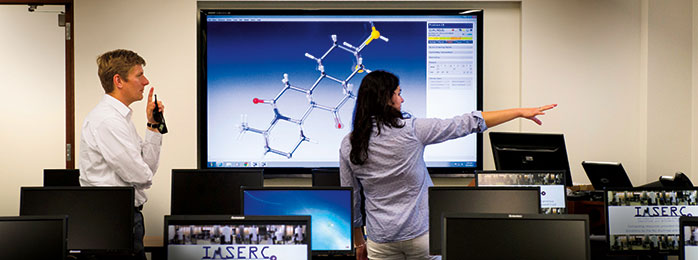
A Nucleus for Research
IMSERC's equipment enables scientists to identify the characteristics of new molecular compounds.
Weinberg College’s newly renovated Integrated Molecular Structure Education and Research Center is more than a teaching tool for students and a treasure trove of technology for researchers.
It’s a meeting place for specialists who need each other to solve difficult problems, a nucleus around which bonds are formed and new discoveries are made.
“We try to look at what researchers who are making new compounds at Northwestern need, and then we try to develop those capabilities,” says IMSERC Director Andrew Ott, who oversaw the center’s recent $21-million renovation and grand reopening in May.
Consider the recent case of a snag in the development of a cancer drug. Northwestern medical researchers led by Professor Ray Bergan had discovered a compound that showed great promise as a treatment for prostate cancer. However, its structure and composition were very similar to estrogen, which produces a host of unwelcome side effects in male patients.
The researchers wondered if it were possible to minimize the compound’s resemblance to estrogen while preserving its cancer-fighting qualities. So they sought the expertise of chemistry professor Karl Scheidt to create a compound that satisfied their requirements.
But before a compound can be tested for safety and efficacy, chemists must prove it has the structure they’d proposed. So Scheidt’s team brought variations of the compound to IMSERC, where the center’s new spectrometers, diffractometers and optical instruments helped “characterize” them — that is, determine their molecular structures and characteristics.
Though the projects that keep IMSERC humming originate elsewhere on campus — with researchers in nanotechnology, alternative energy and medicine — they all rely on IMSERC’s array of equipment to confirm findings and collect data.
By learning to use this equipment, students gain the skills to prove that new compounds are structured to deliver on their promise to researchers across the scientific spectrum.
Back to top